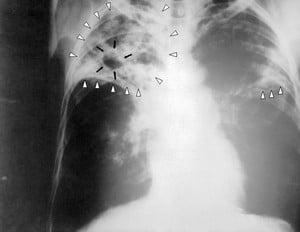Yeast infections are a common problem not only in humans, but also in canines as well. Canine yeast infections occur more often in the ears than any other body part. Remedies for canine yeast infections range from prescription drugs and medications, to homeopathic remedies. It’s your responsibility, the dog owner, to choose what works best for your dog and to administer the appropriate remedy to cure the ear infection.
Where do Canine Yeast Infections Start?
There are small, healthy colonies of yeast bacteria living on different parts of the dog’s body. Common yeast population areas are- between toes, on anal glands, normal skin, muzzles, and inside the ears. It’s normal to find the presence of yeast in small numbers on the body of a canine, but if colonies are allowed to grow wild and out of control, then that’s when the onset of a yeast infection originates.
What Symptoms to look out for in a Canine Ear Yeast Infection?
Once a canine yeast infection begins, it starts with a small rash which increases in size with certain conditions- itching, scratching, and non-hygienic practices. The itching and scratching will further aggravate a small rash, and in combination with non-hygienic practices, increases the severity of infection and can spread to other parts of the body. If your canine has the following conditions- excessive ear wax and/or debris build-up, moist or wet ears (dog grooming habits, floppy or over sized ears), bad odors originating from inside of the ears, long or excessive growth of ear hairs, and/or a poor immune system; he is more than likely to be prone to Canine Yeast Ear Infections.
How to Perform a Healthy Ear Exam?
While your dog is in a relaxed state, you can perform this simple ear exam with no problem. First, look inside of the ear and observe for: evenness in color and thickness of skin inside of both ears- healthy ears are uniformly pink in color with no signs of inflammation. You should also look at the amount of ear wax build-up. Odorless, and little to no amounts of discharge, is considered healthy. Anything in excess could be possible indication of an ear infection.
DIY (Do-It-Yourself) Home Remedies
Here are a few popular home remedies for curing a Canine Yeast Ear Infection, in lieu of a veterinarian’s prescription for medication.
Clear excessive wax build-ups using this gentle ear flush solution: Mix an ear cleansing solution made of equal parts vinegar and warm water, and carefully insert into your dog’s ears. Gently agitate the solution by rubbing it in, and wiping out the infected tissues. Repeat and dry thoroughly until ears are completely clean of debris. This is helpful in preparing for yeast infection medication application.
Maintain weekly grooming routines- trim excess ear hair weekly or every other day.
Eliminate exposure to- ragweed, tree pollen, environmental chemicals, and food allergies (corn, wheat, sugars).
Culprit Antibiotics and drug medications- side effects of antibiotic or certain medications can compromise the immune system, which may encourage bacterial growth of yeast. Limit usage or investigate for natural alternatives.








